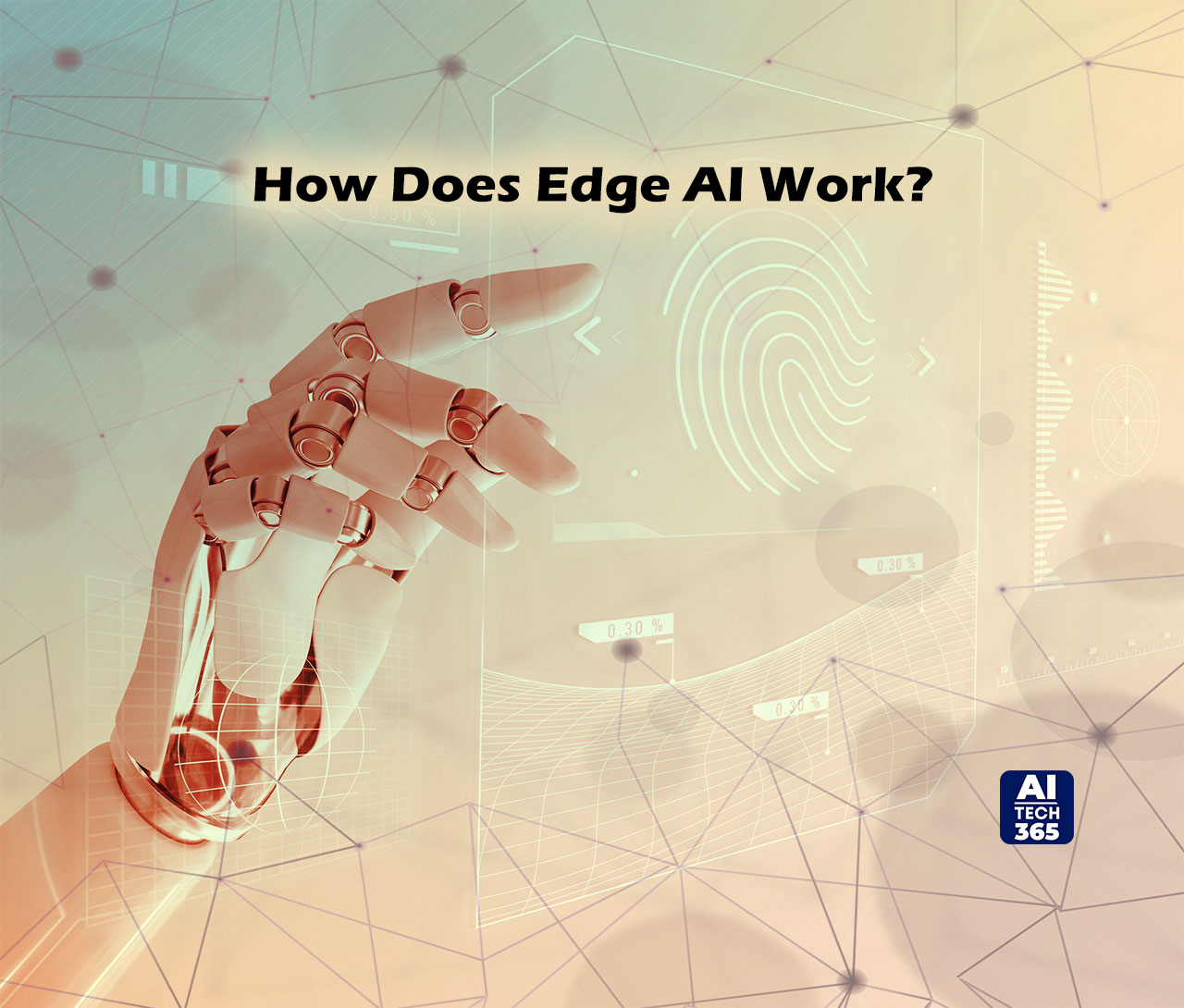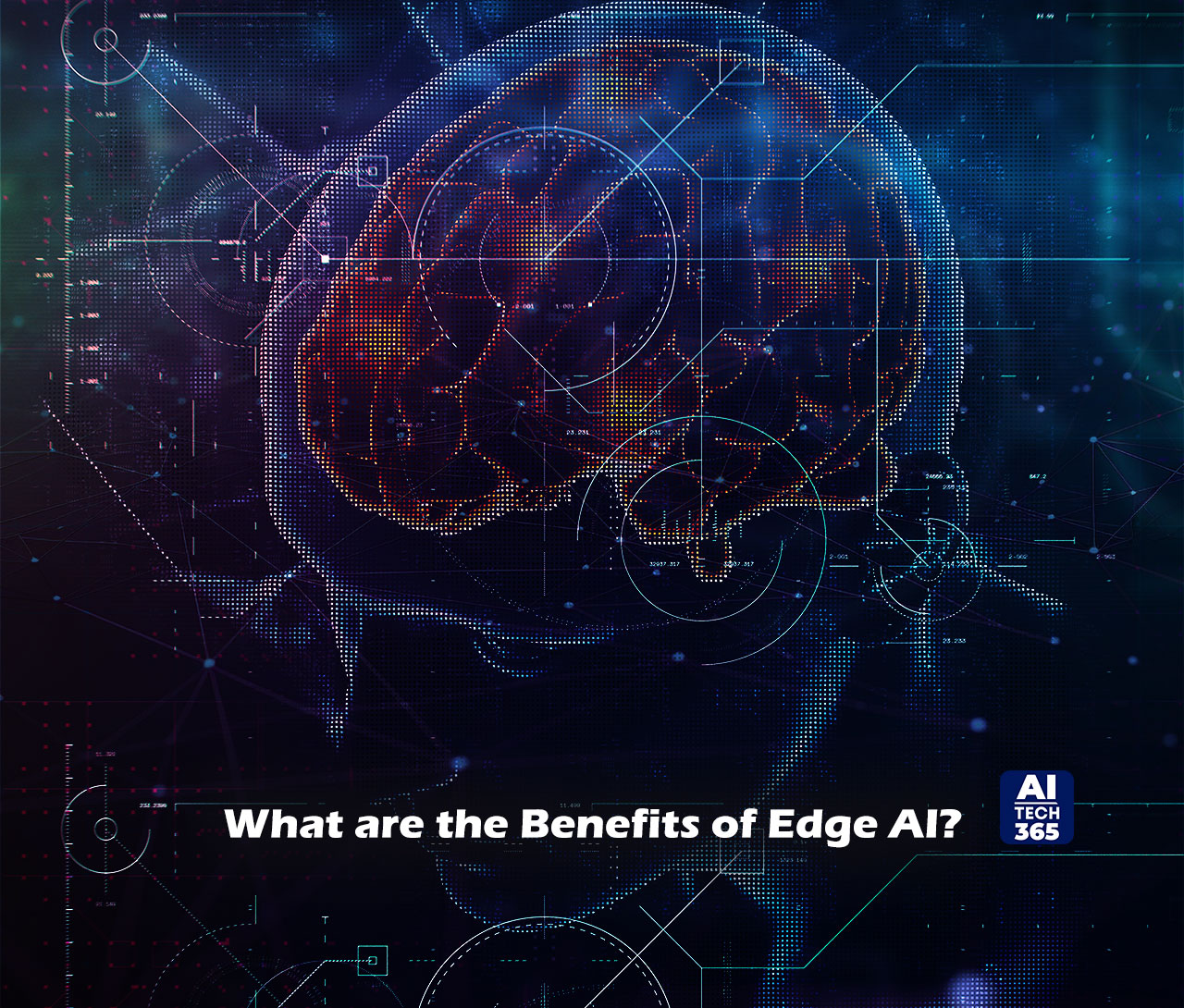Imagine waking up to the ideal cup of coffee brewed for you by your coffee maker. The smell of wonderfully toasted bread greets you as you move through the kitchen without having to do anything.
It might sound like it’s straight out of fiction. But, it is not. edge AI (artificial intelligence)will make all of this possible one byte at a time. The global edge AI market forecasts a significant growth rate of 21.0% in the coming years.
What? How? When? Well, that’s exactly what we will be discussing in this article. Let’s delve in.
What is Edge AI?
Edge AI is the integration of artificial intelligence into the edge computing ecosystem, which enables the efficient processing of computations where data is created rather than relying on a centralized computing facility or an offsite data center.
In a nutshell, edge AI, often known as “AI on the edge,” is the utilization of artificial intelligence and edge computing to perform machine learning tasks directly on networked edge devices.
AI algorithms enable data to be processed directly on the network edge, with or without an internet connection, while edge computing permits data to be stored near the device location. This makes it possible to process data in milliseconds and provide feedback in real-time.
Technologies such as wearables, security cameras, smart home appliances, and self-driving cars use AI on the edge capabilities to provide users with real-time information quickly when needed.
How Does Edge AI Work?
 Machine learning programs can work right where they’re needed with AI on edge, right at the very start of where the information comes from. This could be on a special computer nearby or even on a smart device like a sensor or a smartwatch. Edge AI devices gather and process device data in addition to monitoring device activity through embedded algorithms. This enables decision-making, automatic problem-solving, and prediction of future performance for the device.
Machine learning programs can work right where they’re needed with AI on edge, right at the very start of where the information comes from. This could be on a special computer nearby or even on a smart device like a sensor or a smartwatch. Edge AI devices gather and process device data in addition to monitoring device activity through embedded algorithms. This enables decision-making, automatic problem-solving, and prediction of future performance for the device.
Also Read: AI in Cloud Computing: The Definitive Guide
From modern central processing units, or CPUs, to microcontrollers and cutting-edge neural processing devices, AI on the edge can operate on a broad variety of hardware. Major tech companies such as Qualcomm, NXP, and Intel produce some of the most popular edge computers.
To simplify its mechanism, imagine you have a smart security camera outside your home. Ideally, it sends all footage to a big computer far away to analyze suspicious activity. This way it takes a little bit of time to get the information.
Now with AI on the edge, this camera has its own little brain, so it doesn’t have to depend on another computer to do its job. It can figure out by itself if it is a person or a stray dog and analyze footage quickly by itself. That’s how it works.
What are the Benefits of Edge AI?
 There are several advantages to combining artificial intelligence and edge computing. AI on the edge offers high-performance processing power to the edge, where sensors and Internet of Things devices are positioned.
There are several advantages to combining artificial intelligence and edge computing. AI on the edge offers high-performance processing power to the edge, where sensors and Internet of Things devices are positioned.
Since there is no need for connectivity or system integration, users can process data on their devices in real time. They can also save time by aggregating data without having to communicate with other physical locations.
Below are some of the top reasons why edge is better:
- Reduced electricity consumption: Reduce energy costs by using local data processing; AI may be operated at the edge with significantly less power than in cloud data centers.
- Reduced bandwidth: Minimize data flow bandwidth and expenses by processing, analyzing, and storing more data locally rather than transferring it to the cloud.
- Reliability in Constrained Connectivity: Edge can function in constrained or sporadic connectivity conditions. The AI calculation is not reliant on constant cloud connectivity because it is performed on the edge device itself. Due to this, it works in situations where network connectivity is unpredictable or inconsistent.
- Privacy: Reduce the possibility of data being misused or abused by using locally processed data from edge artificial intelligence processes on edge devices.
- Security: Filtering redundant, unnecessary, and extraneous data or processing and storing data in an edge network to prioritize critical data transfer.
- Scalability: Systems with native edge capability and cloud-based platforms on original equipment manufacturer (OEM) equipment can be easily scaled.
- Lower latency: Allow the cloud-based platform to focus on other duties, like analytics, by removing a portion of the burden and analyzing it locally.
What are the Disadvantages of Edge AI?
- Limited computing power: In comparison to cloud-based systems, edge devices often have less computing capacity. The complexity and scope of AI algorithms that can be used on edge devices may be limited by this constraint.
- Limited storage capacity: Edge devices often have less storage. This may pose difficulties when working with big datasets or storing and analyzing past data to train AI models.
- Dependency on local resources: AI on the edge is dependent on local resources, such as power and network connectivity, being available. AI on the edge systems’ dependability and performance could be impacted when these resources are erratic or inconsistent.
- Lack of centralized control: Since edge systems run autonomously on edge devices, there may not be enough centralized oversight or coordination. It may be difficult to maintain and update AI models across a large number of edge devices due to their decentralized nature.
- Security hazards: Compared to cloud-based AI systems, edge AI poses more security threats. Edge devices could be more susceptible to data breaches, illegal access, and physical manipulation. Maintaining the integrity of edge artificial intelligence systems requires making sure that edge devices and the data they process are secure.
What is the Difference Between Edge AI and Gen AI?
When it comes to artificial intelligence, Edge AI and Gen AI are two distinct concepts. Using AI on the edge, real-time data processing is made possible without depending on the cloud by installing AI models directly on nearby edge devices, like smartphones or Internet of Things gadgets.
Contrarily, artificial general intelligence (AGI), or Gen AI, is concerned with creating AI systems that have human-like abilities to reason, think, and carry out intellectual tasks. It goes beyond standard AI systems that analyze data and generate predictions; instead, it involves producing new data or content based on patterns and training data.
Simply put, AI on the edge is like giving a robot its own brain to make decisions, while Gen AI is like making the robot smart so it can perform tasks just like humans.
Will Edge Replace Cloud?
Edge computing and cloud computing are two different things with distinct purposes; each having its own benefits and disadvantages. Edge can not replace cloud computing any time soon, even though the former is accepted by many companies over the cloud.
This is because edge computing offers several advantages such as improved data privacy, minimized latency, and increased real-time processing; while cloud computing offers cost-effectiveness, scalability, and the ability to store massive volumes of data, hence balancing each other out.
Cloud AI vs Edge AI
While cloud and edge AI differ significantly, they are similar nonetheless. While cloud AI offers flexibility, it also necessitates an internet connection as it processes and saves data on the cloud. Dependency like this might cause problems with security and efficiency. AI on the edge generates real-time data, stores it locally, processes it, and makes decisions on its own. Due to the enormous processing power that AI on the edge devices possess, it may surpass cloud AI in popularity. This, however, is dependent upon the kinds of chips that are offered, as well as their cost and effectiveness.
Edge AI Use Cases
Below are some of the key industries that use AI on the edge to streamline and improve their operations:
Healthcare
By utilizing edge and cutting-edge technology, healthcare providers are evolving and striving to create smarter systems that safeguard patient privacy and speed up reaction times. AI models are used by wearable health monitors to assess parameters such as blood pressure, heart rate, glucose levels, and respiration. Additionally, these gadgets may recognize unexpected patient falls and notify caregivers. Paramedics may communicate with doctors regarding efficient patient stabilization techniques when they are in ambulances equipped with data processing capabilities. By using AI on the edge, emergency rooms can better serve patients’ specific care needs by facilitating the flow of vital health information in real-time.
Manufacturing
Global manufacturers are incorporating edge AI technologies to boost production and efficiency in their processes. The ability of sensor data to anticipate machine failures and proactively detect anomalies enables predictive maintenance. Furthermore, this technology can be applied to sectors such as supply chain analytics, floor optimization, worker safety, yield optimization, and reduced operational downtime.
Retail
Retail has been greatly impacted by the growth of eCommerce, which has pushed traditional retailers to innovate in order to offer a smooth shopping experience. Artificial intelligence (AI) is being used by new technologies such as pick-and-go stores, shopping carts with smart sensors, and smart check-outs to improve the in-store experience, which in turn improves customer engagement and the entire shopping experience.
Home Devices
By identifying suspicious activities, alerting users, and setting off alerts, Edge AI’s computer vision applications and object detection capabilities on smart security systems give inhabitants a greater sense of security and peace of mind. The high-performance processing capabilities of AI on the edge make security video analytics quicker and more precise.
Is Edge AI the future?
Edge AI will certainly play a significant role in the future of AI. This is because as technology advances, the demand for faster, smart, decentralized processing grows.
An excellent real-life example is the adoption of autonomous cars worldwide. Humans are preferring Tesla, Ford, Waymo, and much more because of the benefits they offer. These cars use special tools like sensors, cameras, and smart computer programs to understand what’s around them, decide what to do, and drive without accidents.
AI on edge could likely be even bigger than cloud AI, as long as it can maintain its massive computing power. But, this is not to say that edge artificial intelligence will completely take over cloud computing. Businesses will still need to use SaaS applications, databases, and cloud infrastructure to stay competitive.


